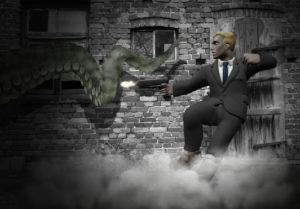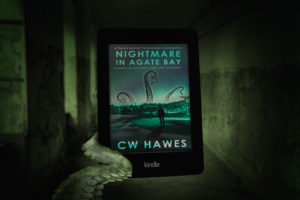Worldbuilding, while often thought of as something only fantasy and science fiction writers need to do, is actually something all authors engage in.
The New York of Nero Wolfe isn’t exactly the New York that actually exists. It is a carefully constructed version that suits the storytelling of Rex Stout.
My Justinia Wright series is set in Minneapolis. But it is not quite the same Minneapolis that currently exists. The Minneapolis of Justinia Wright is a fictionalized version that suits the needs of the story.
The Pierce Mostyn series, although set in the present day, is a fictionalized version of today. The world building is much more subtle, than say Neverland, or Oz, or Barsoom, or Pellucidar, or any of the Star Trek worlds, but it is still worldbuilding.
This is because fiction is, well, to be honest, a lie. Stories are not reality. They’re entertainment. And to be successful entertainment they need to be lifelike, but not real life.
Take “The Lottery” by Shirley Jackson. The setting is small-town America of the 1940s (the story was published in 1948). But it is no small town that actually existed then. What small town annually stoned to death one of its citizens? Jackson created a world that was mostly normal, save for that little part that wasn’t. Superbly horrific worldbuilding.
For Pierce Mostyn, while there is much that is “normal”, there is much that is not. There is much that is made up or borrowed from the Cthulhu Mythos.
Kathy Edens, in World-Building 101: How to construct an unforgettable universe for your fantasy or sci-fi story (published by ProWritingAid), gives us three rules of worldbuilding:
-
-
- Creating a new world goes way beyond mere setting
- Use other author’s worlds to inspire your own
- Don’t make new world your story’s focus
-
In Pierce Mostyn, the setting is the contemporary world. However, it doesn’t stop there. Monsters exist. Weapons and devices exist in Mostyn’s world that don’t exist in ours. Geography is manipulated to suit the needs of the story. Pierce Mostyn’s world is one where monsters and terrifying aliens are alive and bent on our destruction, unbeknownst to the population at large.
To build Pierce Mostyn’s world, I borrowed from The X-Files and Lovecraft’s Cthulhu Mythos — and then added stuff from my imagination. The world may look a lot like our own, but it is as fantastical as Oz.
And while Mostyn and his team hunt monsters to save us from annihilation or enslavement, the stories ultimately deal with people and the larger issues of life. Cthulhu is as important as our reaction to him.
There are now 7 books in the Pierce Mostyn Paranormal Investigations series, with an 8th in the works, and a 9th on the drawing board.
I hope you enjoy reading about Mostyn and his world as much as I enjoy writing about them.
Comments are always welcome! And until next time, happy reading!
Share This!
